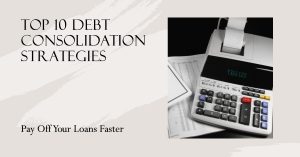The wealthy know how to diversify through a strategic mix of real estate, equities, and other alternative investments such as private equity and hedge funds. They believe in assessing asset classes for the proper balance between risk and reward so that their strategies align with financial goals and risk tolerance. Global market exposure is very important, ensuring higher returns and mitigation of risk by reduced correlation. They utilize financial instruments to optimize the effect of preserving their wealth and are vigilant with regard to market trends for proactive adjustments in their portfolios. This comprehensive approach will ensure that they take advantage of newly unfolding opportunities and protect their investments. Take a closer look at this strategic process that forms the backbone of efficient wealth management and asset growth.
Asset Class Understanding
Understanding asset classes is fundamental to sound asset diversification. You are a high net worth client interested in efficiently optimizing your financial portfolio. It’s now time to strategically consider the alternatives available under different asset classes to ensure a sound mix of investments. Real estate investment and stock market comprise two of the most important pieces of your wealth-building formula. Both have certain respective characteristics that could work in the interest of your financial independence.
Real estate investments provide you with tangible property that, in most cases, generates highly stable income, either in the form of rentals or through eventual appreciation. Real estate would be a hedge against inflation, offering that sense of security and control which appeals to a self-sustaining individual.
It is necessary, however, to analyze market conditions, location, and economic trends in order to maximize your returns.
On the other hand, the stock market allows one to capitalize on capital growth and diversification through investing in a range of stocks-capitalizing on economic expansions and corporate milestones that are happening. Stocks allow one to have liquidity and flexibility to quickly adapt to changes in markets.
This flexibility can allow you to seize opportunities wherever they come about, and this fits perfectly with your need for freedom and growth.
Adding real estate and stock market investment to your portfolio strategically will therefore enhance your diversification and balance your approach towards managing your wealth.
Balancing Risk and Reward
Diversification of assets does mean a balancing act-a risk versus reward balancing. So, it is necessary to fit the investment strategy according to financial goals, taking into consideration one’s tolerance for risk. First, consider how much volatility you’re willing and able to withstand to reach your desired potential reward. This may set you right on target to meet your goals through strategic portfolio allocation and reduce market volatility.
Asset correlation: Think about the correlation of assets in your portfolio. Low-correlated assets perform differently under the same market conditions; therefore, they can decrease the overall risk of your portfolio. You will not be overexposed to one single market event.
Liquidity aspects: The fact is that you do need to make sure that if you want cash, you can get it in cash. You should avoid being in a situation where you have to sell something at a loss if you urgently needed money.
From the ever-changing market conditions to your evolving personal circumstances, your investment strategy should be dynamic. You regularly need to check your portfolio allocation and it must match with your risk tolerance and financial goals.
Leveraging Global Markets
Widening up your investment horizons to the global markets can be quite an astute way of investing while one pursues a balanced portfolio. By opening yourself to foreign investment, you may get access to international equities and emergent markets with higher potential for improvement in returns. Coupled, however, with such opportunities are challenges such as currency exposure and geopolitical risks; there needs to be careful weighing of these factors.
Global diversification spreads the risks that any one market would present, cushioning the company against local economic downturns. You can exploit the growth in less correlated home markets by using cross-border strategies. By adopting this strategy, you distribute the risk and, at the same time, multiply your possibilities of profit through various economic cycles.
It’s quite important to understand currency exposure. The after-tax return on your international investment can be affected by changes in the exchange rate. You may look into hedging activities to improve your control over volatility.
You also want to be abreast of geopolitical risks. Political turmoil or changes in regulations in another country can impact your investments.
The bottom line, however, is that the approach to global markets has to be very strategic and cognisant of all complications. This approach provides room to generate a resilient and responsive portfolio to global economic fluctuations.
Alternative Investments
Delve head-first into the world of alternative investments to build your portfolio with a class of assets beyond conventional stocks and bonds. You’ll actually be putting yourself out there to real estate, strategically including tangible assets into your portfolio that may create steady income and appreciation.
Private equity provides a way to tap into the growth of high-growth, unlisted companies and offers the potential for returns that are at least decent. Hedge funds are sophisticated means of diversification across investment strategies with a clear potential for risk-adjusted returns uncorrelated with the broader markets.
Cryptocurrency brings decentralization with the promise of innovation and volatility, hence a target for those who want to ride the wave of digital finance’s future.
Then, there are the collectibles, representing a more individualistic passion mixed with financial investment, therefore making art and rare wines highly valued assets. Venture capital itself capitalizes on the entrepreneurial spirit, a finance provided to startups that can transform whole markets and promise huge rewards in return. Other classes include commodities, such as gold bullions and oil, serving as an inflation hedge and helping to stabilize markets.
Finally, impact investing marries financial goals with social and environmental values, allowing you to be an active force for change while working toward financial independence.
With these tools at your disposal, create a robust, dynamic portfolio that breaks free of the mold.
Putting Financial Instruments to Work
Financial instruments form the bedrock upon which successful approaches to investment are based; they equip the high net worth individual with the tools to control risk and maximize return.
While aiming at economic freedom, you are aware of the necessity of diversification of your asset base. Hedge funds also form a very important part of your portfolio management, imbuing a unique blend of flexibility along with risk mitigation. Such funds will probably remain quite instrumental in applying state-of-the-art investment strategies that will be in tune with your preference for risk assessment and financial objectives.
Strategic market analysis allows you to highlight opportunities that are in tandem with your objectives of financial planning. You are able to balance possible capital gain against the need for wealth protection through an optimal mix of derivatives, bonds, and equities. By doing so, the approach has not only diversified your portfolio but also created liquidity options, which assure you of access to capital when needed.
Effective use of financial instruments requires you to be very sensitive to the dynamism and changes in the market. You will be cushioning your portfolio from possible market fluctuations, thereby securing your wealth and finding new ways to invest in other opportunities.
At the end of the day, financial instruments put control into your hands as you go forth, ensuring that your financial future is exactly how you imagine your freedom and prosperity.
How to Follow Market Trends
But a strong and nimble investment portfolio demands that you continuously be watching the market, through in-depth market studies to interpret rightly what is happening in the financial world around you. These would include monitoring various economic indicators, changes occurring in industries, and geopolitical events that may impact how certain assets fare. By understanding these trends, you can make well-informed decisions on where to place your resources and thereby improve your capability of seizing emerging opportunities.
You have to be strategic in the way you can incorporate market analysis into your investments. Keep on gathering data from credible sources, analyzing the trend over the years, and make forecasts. It will give you a proactive position since you can anticipate what change is going to take place, and in that case, you are prepared to make the necessary adjustment in your portfolio so it can be fortified against volatility.
Remember, the market is fluid, and making moves outside the box of its dynamics results in missed opportunities or taking unnecessary risks. It is important that you integrate these insights into your investment strategies to realize freedom in pursuit of your finances. This way, you take control of your financial destiny to adapt and thrive no matter what changes occur in the market.
Responding to Changes in the Economy
While you tap into knowledge from monitoring market trends, it is equally important that you also learn to adapt to changing economic fortunes shaping the broader financial panorama. Building financial literacy through your interpretation of what economic indicators mean will make you capable of taking decisions.
With the turbulent market in almost all instances in today’s world, one has to consider strategic investment planning that can stand up to such an economic shift. First, a comprehensive risk analysis of your present holdings is called for. Ascertain the nature of the potential economic changes like the impact of inflation that will affect your assets.
This will be helpful in portfolio rebalancing to keep your investments on target with your long-term goals. Keep in mind the tax consequences of any adjustment, as these may highly affect the net return of your investments.
Conclusion
As you ride through the financial frontier, base your direction on asset diversification. You have balanced risk with reward, leveraged global markets, and added alternative investments-a sound portfolio that will help weather the economic storms. Keep abreast of market trends and shift accordingly with the economic winds-like a seasoned sailor adjusting his sails. Your financial boat will sail with ease through calm and troubled waters alike, promising a prosperous voyage, with strategic foresight and professional acumen.



